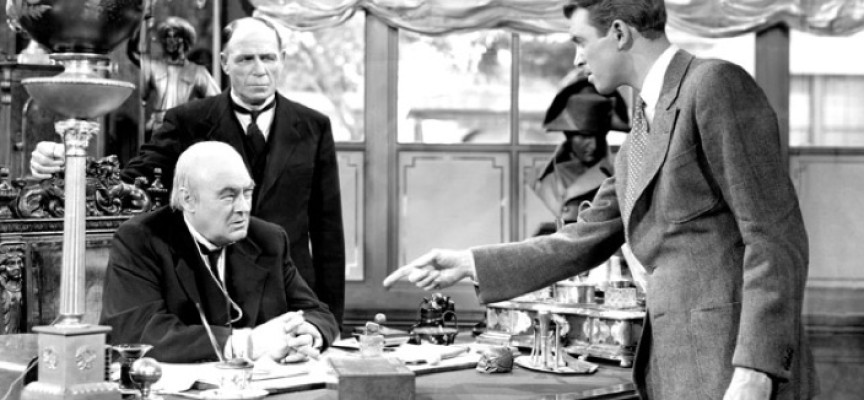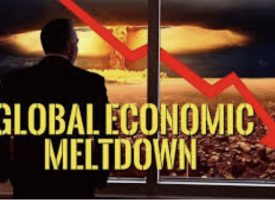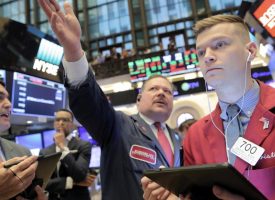March 26 (King World News) – Danielle DiMartino Booth at Quill Intelligence: Before he penned “Somewhere Over the Rainbow,” E.Y. “Yip” Harburg wrote an anthem to the working man. Released just before Franklin Delano Roosevelt was elected to office as part of the 1932 musical Americana, “Brother, Can You Spare a Dime?” became the best-selling song of the Great Depression. Sung to silky perfection by the inimitable Bing Crosby, Republicans derided the tune as anti-capitalistic propaganda and radio stations attempted to have it banned. The song so resonated because it gave a voice to those who had lost theirs. Per Harburg, the lyrics were meant to capture the conflict gripping a nation: “He’s bewildered. Here is a man who had built his faith and hope in this country. Then came the crash. Now he can’t accept the fact that the bubble has burst. He still believes. He still has faith. He just doesn’t understand what could have happened to make everything go so wrong.”
It might surprise you that the faith held. In a 1936-37 poll, the Pew Center found that, “about half [of Americans] (50%) expected general business conditions to improve over the next six months, while only 29% expected a worsening.” The source of the confidence was faith in the federal government (we would add stocks had just come off their best 12-month rolling return in history). A fresh Gallup poll found that 32% of Americans are satisfied with the direction of the nation. The breakdown between political parties is telling with 59% of Democrats, 34% of independents and 9% of Republicans approving of Congress’ performance.
Gallup’s guarded take on what the future holds ended as such: “It is possible that satisfaction with the country’s direction will extend beyond party lines if the government continues to make headway in combating the spread of COVID-19 and the U.S. economy continues to show signs of meaningful recovery. But it is also possible that Republicans will remain dissatisfied while Democrats’ recent boost of enthusiasm wears off as the year progresses.” We share Gallup’s concerns on the potential for waning optimism…
Billionaire Eric Sprott Buying
To find out which company billionaire Eric Sprott just bought a 12% stake in click here.
Last month, we shared the work of QI amiga Michelle Meyer, Bank of America’s (BofA) chief economist, tied to a parallel moment in economic forensics following Stimulus 2.0’s $600 stimulus checks disbursement. Meyer’s crack economics team has an invaluable prism into the checking accounts of those who receive stimulus via direct deposits.
The findings: In early January, over a 10-day span, households making $50,000 or less grew their spending double digits. The initial burst clocked in at 40% year-over-year, three times the level of households that did not receive stimulus. Lower-income households’ outsized reaction function is what prompts economists to say that lower income households have a higher propensity to spend stimulus monies.
It was thus with much anticipation that we awaited Thursday morning’s initial read on the impact of Stimulus 3.0. How much did those $1,400 checks spur spending, and on what? A disclaimer on the apples-to-oranges in comparable data. January’s data lent itself to year-over-year data which did not yet reflect the massive spending declines seen when the shock first hit. We’ve since crossed the Rubicon into the morass of post-pandemic 2020 data; you’ll increasingly see comparisons against 2019 levels.
With that, spending in the seven days ending March 20 by households making $50,000 or less was up an incomprehensible 69% over a 2-year period, more than four times the 16% increase among non-recipients (upper righthand chart). Meanwhile, spending for the highest income cohort earning $125,000 or more (not displayed) rose by 29% compared to a trend-like 7% for non-recipients.
The chief beneficiaries were, in this order — Furniture, Online Electronics and Clothing (lower righthand chart). We also note that the back deck is not getting re-re-done this spring – sales at Home Improvement stores were down by 10% for those who didn’t receive stimulus. For that matter, sales across the board were negligible for non-recipients who are presumably one in the same with those who’ve amassed the most savings. We suspect this is a reflection of 500-point, one-day swings in the Dow Jones Industrials making households with an inherent propensity to spend a bit jittery.
And then there’s the coronavirus. Case counts are up…again. Per Johns Hopkins University data, Wednesday’s seven-day average of 57,695 is 9.5% higher than the prior week. With one-quarter of Americans vaccinated, it’s bizarre to see this trend re-emerge. That said, multiple polls have found that one-third of Americans are unwilling to get vaccinated. The vaccines can get delivered expeditiously and to fanfare. Achieving herd immunity will require jabs get into arms.
While Wednesday’s surge (left hand chart) reflected a data catch up in New York, the national trend is rising to the same extent. We would add that the USA Today state-by-state count now encompasses 32 states including Florida where we know many Texans ventured to enjoy their Spring Break vacations last week. (The benchmark is zero states several weeks ago.) Travels will continue through the long Easter weekend.
The last thing we want to see is yet another stutter-step in the reopening, especially if Stimulus 3.0 monies are quickly exhausted. We doubt any politician in America will reverse reopening. But the process could be slowed, shaking confidence and prompting calls for Stimulus 4.0 and Americans singing, “Brother, Can You Spare a Trillion?” If only we had a true New, New Deal that put millions back to work.
Within hours KWN will be releasing 2 audio interviews.
© 2021 by King World News®. All Rights Reserved. This material may not be published, broadcast, rewritten, or redistributed. However, linking directly to the articles is permitted and encouraged.








